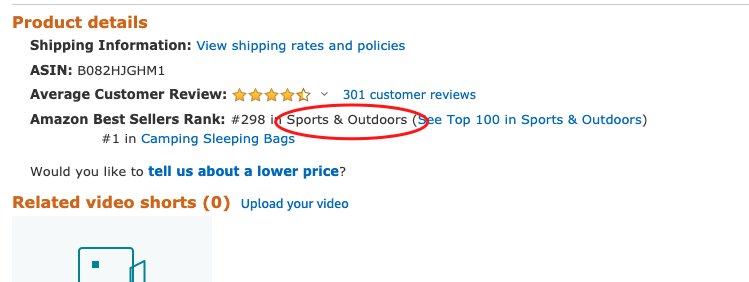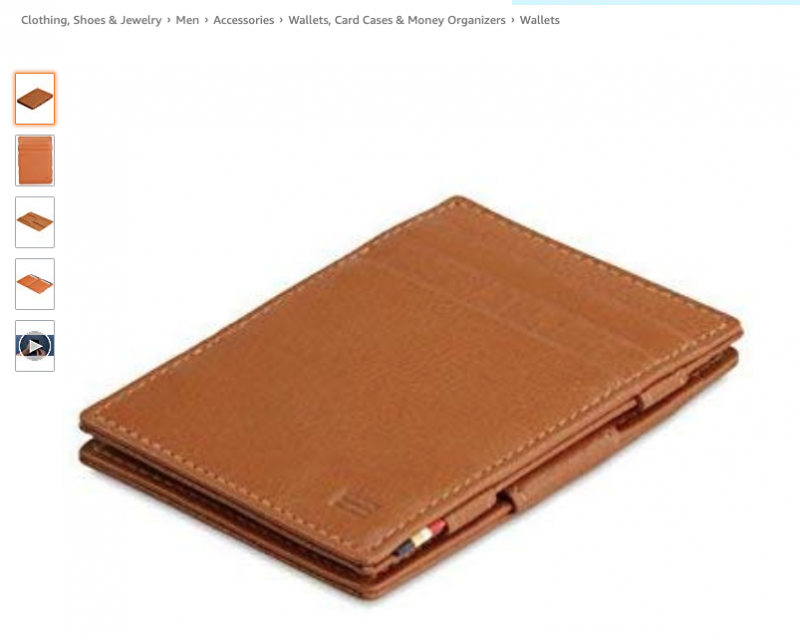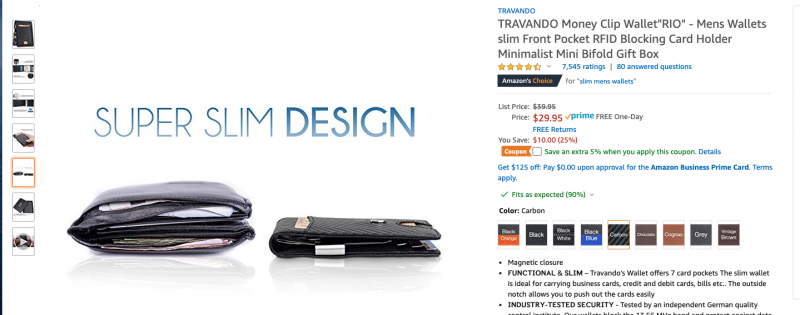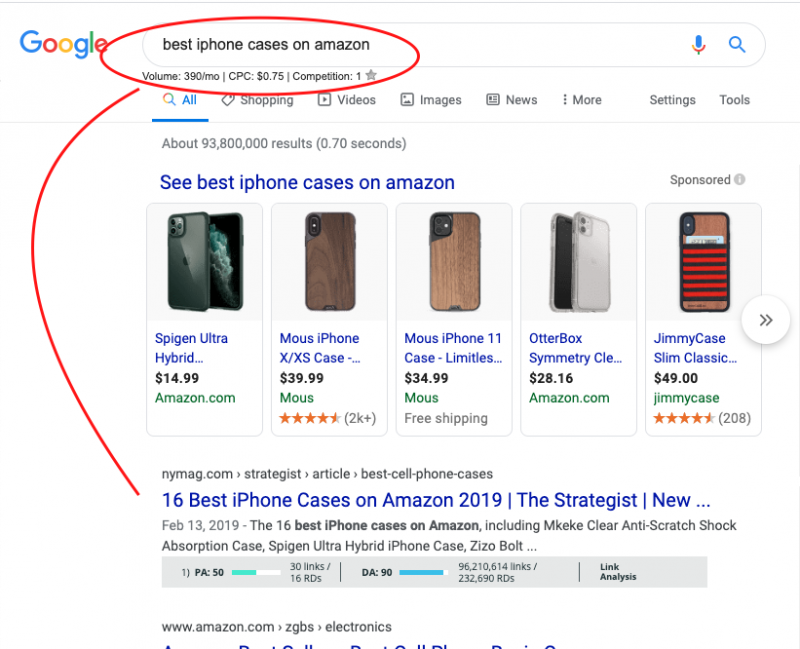With over 50% of commercial intent searches now starting in Amazon, knowing how to correctly list and optimize your product listing on Amazon is critical to your success as a seller.
First up, what is Amazon SEO?
Amazon SEO is the optimization of your product listing to improve its visibility for searchers. Like Google, Amazon is a search engine that uses an algorithm (A9) to rank the products, based on relevancy to the search and likelihood to convert to a sale.
How Amazon Ranks
Amazon’s A9 algorithm is complex and there are many factors that go into the ranking of a product. There are however some factors that carry more weight than others:
Relevancy
How relevant is your product to the searcher’s query and intent? It seems obvious but if your product is not correctly listed, uses the wrong keywords, or is miscategorized then the relevancy match will be low and the likelihood of ranking for what you’d hoped for will be also.
Keyword Level Conversions
The less traffic your product listing requires to get the sale the higher it will rank for that keyword. This is one of the reasons you may find your position fluctuates across closely related keywords. You simply convert better for one of those keywords more than another, and so you’re ranked higher for that keyword.
Sales Velocity
This is Amazon’s measurement of conversion. Out of every 100 users sent to your listing, what percentage rate are you converting at? The better your conversion rate the higher you’ll rank. The best converting products being the ones that Amazon ranks highest, many times earning the “bestseller” or “Amazon Choice” badges.
Planning Your Amazon SEO Strategy
When planning your Amazon SEO strategy there are three main areas you’ll want to focus on competitors, categories, and keywords. The information you collect from each of these areas will help you build stronger, more focused product listings, and increase your ranking potential for the search terms you want to show for.
Competitor Research
For this, you need to first know who your competitors are. You’ll want to start by searching for competing products using the terms you’re familiar with. Do a series of broad keyword searches and niche keyword searches. Are any brands/products showing up for all these terms? Are you seeing the same products show up as “sponsored”, who is showing as “Amazon Choice” or “Bestseller” for each of these searches? This is your competitor list.
You’re going to want to deep dive each of the top competitor’s product listings and see if there are details that crossover or what are the unique elements of their listing. You really want to study how they’re listing the product:
- Title – look at this closely, what keywords are they using, are they mentioning uses, can you find crossover terms between winning listings.
- Bullets – what are the features and benefits listed, again watch for common keywords and unique keywords.
- Description – do they use have EBC (Enhanced Brand Content) or all text descriptions. How are they positioning their product, what are those keywords they’re using — are they different that perhaps your initial keyword ideas. You want to be targeting the common searched name for your product.
- Images – what details are they calling out, is the photography great or do you have a chance to wow prospective buyers with stronger imagery.
- Reviews – take time to read the positive and negative reviews of your competitor’s product. This is an opportunity for you to learn what common concerns to address in your product listing, and find things that people love — again this can enhance your listing if you can meet those expectations with your product.
Choosing the Correct Category
This is extremely important to do as you’re starting out on Amazon and as you’re branching into new markets. While researching your competitors you’ll want to pay close attention to their categories. You can find this in the product listing if you scroll towards the description, you’ll also notice it on a desktop search in the Amazon search bar.

If you fail to get listed in the correct category you could be filtered out following the first search. If someone clicks into a competitor listing but continues searching Amazon can niche down searches to be within the defaulted parent category.
You cannot choose multiple categories to have your product in. Starting out you’ll need to be wise when requesting the parent category, categories within that will be added by Amazon as your listing starts to sell.
Keyword Research
You should have already established common keywords as you’ve looked over the competitor product listings. However, you want to stack on an extra layer of research to make sure you’re not missing out on any other opportunities, or perhaps better ones that your “competitors” overlooked.
There are many tools that can help with keyword research, below are a few of my favorite:
- Keywords Everywhere – this excellent tool gives you the volume for the keyword you search right on Amazon. Type it in the Amazon search bar and it will bring up the volume below.
- Answer the Public – add color to your product descriptions and bullets by knowing the questions searchers are asking around your product. Type in the keyword and this tool will give you lots of great suggestions for things to address in your content.
- LSI Graph – a good listing is not going after just a single keyword. Google and Amazon look for those related keywords. This LSI keyword tool will help you find the most profitable semantically related keywords to use in your product listing.

With keywords, it’s always important to remember that it’s going to be much harder to rank the main keyword versus the longtail keywords. Don’t just try and target the single biggest volume keyword for your product. You’ll want to incorporate longtail and related keywords to make your listing strong and searchable in many ways.
Keep in mind many searches on Amazon are attribute and feature-related, this is why it is important to not have a flat, empty listing. Build it out into a product hero page, packed with value for the user.
Using Your Keywords on Amazon
There are several opportunities to use your keywords on Amazon but this does not mean that you have to overstuff your listing. Although Amazon differs from Google when it comes to keyword usage, think of the user. If the listing is just stuffed with keywords (it will feel spammy) and not be helpful to users as they start reading, this will hurt your conversion percentage.
You’ll want to use your keywords to create a great title, along with including main, longtail and LSI keywords in your bulleted copy and product description.
Also, when you’re logged in to Amazon Seller Central and creating/reviewing your product listings you’ll find that Amazon has provided a number of fields in the backend for keywords and attributes. Don’t overlook this opportunity. Use your keywords in the ‘search term’ fields — use as many fields as possible, don’t repeat keywords, use main and longtail keywords, also, you don’t need to do variations eg: “shoe” and “shoes”. You can use up to 1000 characters per field. Under other attributes add as many descriptive keywords as possible (this time use commas to separate.)
The goal is to make your listing as robust as possible. If you do it well and see great conversions/sales on Amazon, you may find that your Amazon product page starts ranking in Google, opening up additional traffic opportunities.
How To Increase Your Conversion Rate on Amazon
As you’ve likely gathered from the many mentions, conversion rate (sales velocity) is a very important factor in your ability to rank on Amazon. Think of it this way, if a product listing converts 3 out of every 100 shoppers and a competing product listing converts 35 out of every 100 shoppers, which would you rank higher? Now consider that Amazon makes a percentage of each sale — you can clearly see why they want the best-converting products to rank highest. When looking at your product listing there are several elements that impact conversion rates.
Amazon Prime is a Must
This is a big one. As a merchant moving from seller fulfilled to FBA (fulfilled by Amazon) can be a game-changer. Many searchers filter out non-Prime results, so first, being Prime increases your visibility/impressions. Second, having that “Free 2-Day shipping” for your product helps knock over the shipping hurdle. Everyone’s expectation on Amazon is free 2-day shipping, so if your listing is seller fulfilled and you’re charging shipping, your conversion rate will drop considerably. Prime is an instant advantage.
Optimize Your Product Listing Optimization
This is your chance to put your best foot forward. Invest in your product listing. Take time to write quality copy, be descriptive, leave no room for objections, and use great photography. Whether you are creating a single product listing or uploading a spreadsheet with dozens of new products you’ll want to fill in as many fields in the product listing as you can.
Creating a Standout Product Listing on Amazon
Product Title
Research your competitors and keywords. What can you learn from the top listings in your vertical? You’ll find title lengths will vary. For example, tech products tend to get more characters than apparel. You’ll want to test the ordering of words in your title, look for product and use keywords to include in the title. Your title should feel natural, be descriptive, and avoid sounding spammy. You’ll see a lot of overstuffed titles on Amazon, this used to work but it’s becoming less of a thing.
Product Bullets
Your listing has five bullets. Don’t just use three of the bullets with a couple of words in each. Your bullets typically show above the fold on desktop and the first three bullets show on mobile. Your bullets should include your most important features and benefits, unique value propositions, and if you offer any guarantees like “lifetime warranty” this is the place to highlight that.
You’ll want your bullets to engage the shopper, inform them of any details they need to know, and if a call to action feels natural, work it in.
Pricing
Shoppers on Amazon have been groomed to have a sales pricing mentality. Your pricing should have a slash through. Even if it is a minimal discount, it still plays into that psyche of wanting and finding a deal.
Product Description
Depending on your seller status/brand size you’ll either have a traditional text product description or if you’re a larger merchant you may have made the switch to EBC (Enhanced Brand Content) for the product description box.
For traditional text product descriptions, many sellers lose momentum here and just note a line or two. That is a major lost opportunity. This is another opportunity to connect with the customer, share the great things about your product, and eliminate any remaining objections they might have to buy.
As you think of how to do this, consider using the AIDA model for writing your descriptions this is a proven framework to help increase conversions. Your description should grab ATTENTION, generate INTEREST, create DESIRE, and encourage ACTION.
You can use basic HTML for your product description, so add some more bullets, highlight a feature or call to action in bold. Break up large blocks of text and make it readable. No walls of text, please!
Images
An image is worth a thousand words. Amazon allows you to use up to 9 images – use them all! Invest in high-quality photography. Your product is the hero, let the images show that. If you use underwhelming images that are grainy, overlook important features, or worse just have one image, you’ll have little to no conversions.


Tips for Amazon images:
- Your first image should be on an all-white background.
- You can use lifestyle images in spots 2-9 as long as your product is the biggest focus.
- Do not use watermarks or overlay text for your website or your listing will be pulled.
- Show all the top features, if the size is important you should include a size chart or a comparison next to a recognizable item. Eg: slim phone case next to a deck of cards.
Customer Reviews
Customer reviews and star ratings heavily influence your CTR (click-through rate) and your conversions. If your product ranks highly and has one of the higher star ratings that will instantly be a draw to searchers. The product reviews then give social proof, if those reviews are good they then increase the likelihood of the user purchasing the product.
However, before you jump headfirst into getting reviews there are a few important things to know.
- You can’t outright ask for reviews or solicit customers for them. You can look at tools like FeedBackFive for follow up emails (using your Amazon email account), but this is a fine line and you must watch how you do this.
- Do not offer a free gift for a review. EG: Give us a 4+ star review and we’ll send you [product here]. You may think no one will do this — I’ve had it happen often. Those sellers are risking a lot.
- You can follow up with tips on how to use, adding extra value to the customer, this could cause them to leave a review.
- If your product has a warranty you can include a follow-up card with your item, this could encourage them to leave feedback for you as the seller (you are not asking for the product.) This can sometimes, in turn, get the product a review also.
Product Reviews & Affiliate Linking
Similar to traditional SEO you’ll want to do some link outreach. Look for product reviewers, best of posts, product guides, etc. For example let’s say your product is an “iPhone case”, approx. 390 people a month Google “best iPhone cases on amazon”, if you can get your product featured in the winning post, this is going to drive direct traffic to your product, this traffic will already have established a level of trust as your product might be perhaps 1 of 10 others featured. This can increase your likelihood of conversion.

These type of posts are not just limited to iPhones, no matter your product or vertical you’ll more than likely find a lot of content ranking on Google, written around the type of product, including best of and comparisons posts.
Amazon has a thriving affiliate program. This makes your job easier as you outreach various bloggers and reviewers with your product. Many sites and bloggers are already part of the affiliate link program. If your product is on Amazon, has good reviews, and a strong star rating this will increase your odds that they’ll include it or review it in their post.
Again, the big advantage here is that your product is now getting outside social proof, and being featured in a narrower set of “best” products in the space. The traffic is somewhat pre-qualified going into the listing and should convert better.
There is no denying that selling on Amazon can be a game-changer for your business. It is, however, a crowded marketplace — just as you want to have a strong eCommerce SEO game plan for your own site, you’ll also want to bring that same effort to your Amazon products. If you’re starting out on Amazon or looking to level things for a new year of sales, we’d love to talk over your Amazon optimization strategy an help you win in that marketplace.

